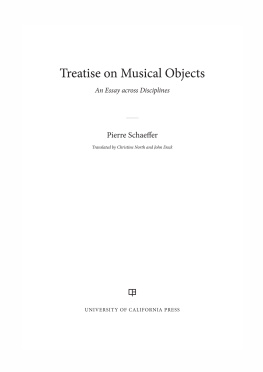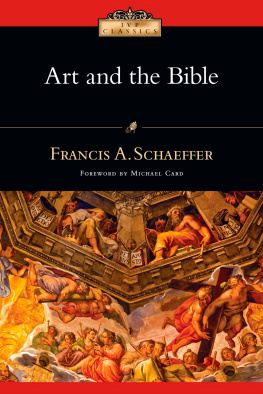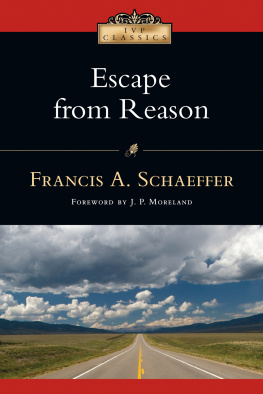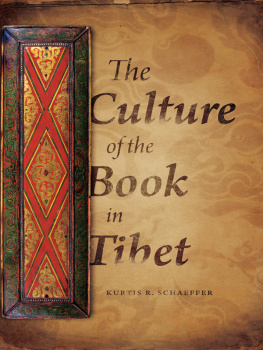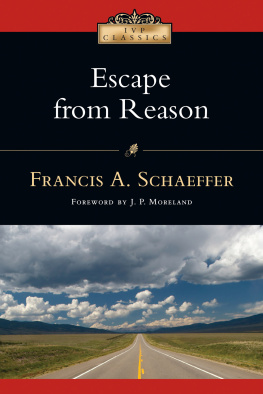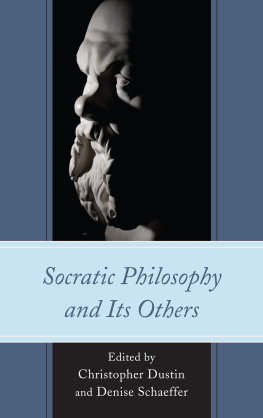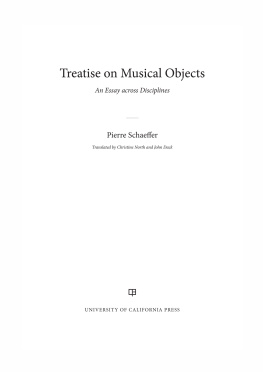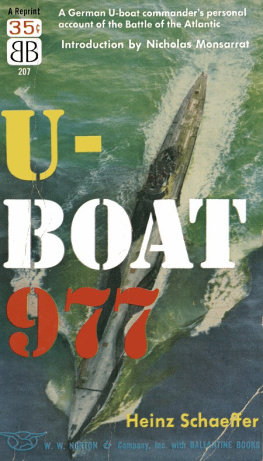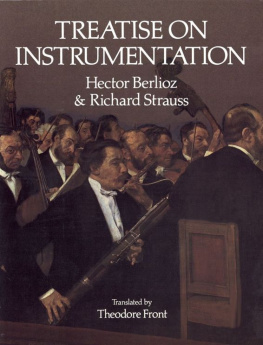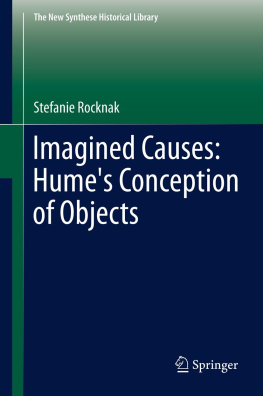Pierre Schaeffer - Treatise on Musical Objects: An Essay Across Disciplines
Here you can read online Pierre Schaeffer - Treatise on Musical Objects: An Essay Across Disciplines full text of the book (entire story) in english for free. Download pdf and epub, get meaning, cover and reviews about this ebook. year: 2017, publisher: University of California Press, genre: Art. Description of the work, (preface) as well as reviews are available. Best literature library LitArk.com created for fans of good reading and offers a wide selection of genres:
Romance novel
Science fiction
Adventure
Detective
Science
History
Home and family
Prose
Art
Politics
Computer
Non-fiction
Religion
Business
Children
Humor
Choose a favorite category and find really read worthwhile books. Enjoy immersion in the world of imagination, feel the emotions of the characters or learn something new for yourself, make an fascinating discovery.
- Book:Treatise on Musical Objects: An Essay Across Disciplines
- Author:
- Publisher:University of California Press
- Genre:
- Year:2017
- Rating:4 / 5
- Favourites:Add to favourites
- Your mark:
- 80
- 1
- 2
- 3
- 4
- 5
Treatise on Musical Objects: An Essay Across Disciplines: summary, description and annotation
We offer to read an annotation, description, summary or preface (depends on what the author of the book "Treatise on Musical Objects: An Essay Across Disciplines" wrote himself). If you haven't found the necessary information about the book — write in the comments, we will try to find it.
Treatise on Musical Objects: An Essay Across Disciplines — read online for free the complete book (whole text) full work
Below is the text of the book, divided by pages. System saving the place of the last page read, allows you to conveniently read the book "Treatise on Musical Objects: An Essay Across Disciplines" online for free, without having to search again every time where you left off. Put a bookmark, and you can go to the page where you finished reading at any time.
Font size:
Interval:
Bookmark:

The publisher gratefully acknowledges the generous support of the Ahmanson Foundation Humanities Endowment Fund of the University of California Press Foundation.
Richard Taruskin, General Editor
Revealing Masks: Exotic Influences and Ritualized Performance in Modernist Music Theater , by W. Anthony Sheppard
Russian Opera and the Symbolist Movement , by Simon Morrison
German Modernism: Music and the Arts , by Walter Frisch
New Music, New Allies: American Experimental Music in West Germany from the Zero Hour to Reunification , by Amy Beal
Bartk, Hungary, and the Renewal of Tradition: Case Studies in the Intersection of Modernity and Nationality , by David E. Schneider
Classic Chic: Music, Fashion, and Modernism , by Mary E. Davis
Music Divided: Bartks Legacy in Cold War Culture , by Danielle Fosler-Lussier
Jewish Identities: Nationalism, Racism, and Utopianism in Twentieth-Century Art Music , by Klra Mricz
Brecht at the Opera , by Joy H. Calico
Beautiful Monsters: Imagining the Classic in Musical Media , by Michael Long
Experimentalism Otherwise: The New York Avant-Garde and Its Limits , by Benjamin Piekut
Music and the Elusive Revolution: Cultural Politics and Political Culture in France, 19681981 , by Eric Drott
Music and Politics in San Francisco: From the 1906 Quake to the Second World War , by Leta E. Miller
Frontier Figures: American Music and the Mythology of the American West , by Beth E. Levy
In Search of a Concrete Music , by Pierre Schaeffer, translated by Christine North and John Dack
The Musical Legacy of Wartime France , by Leslie A. Sprout
Arnold Schoenbergs A Survivor from Warsaw in Postwar Europe , by Joy H. Calico
Music in Americas Cold War Diplomacy , by Danielle Fosler-Lussier
Making New Music in Cold War Poland: The Warsaw Autumn Festival, 19561968 , by Lisa Jakelski
Treatise on Musical Objects: An Essay across Disciplines , by Pierre Schaeffer, translated by Christine North and John Dack
Pierre Schaeffer
Translated by Christine North and John Dack

UNIVERSITY OF CALIFORNIA PRESS
University of California Press, one of the most distinguished university presses in the United States, enriches lives around the world by advancing scholarship in the humanities, social sciences, and natural sciences. Its activities are supported by the UC Press Foundation and by philanthropic contributions from individuals and institutions. For more information, visit www.ucpress.edu.
University of California Press
Oakland, California
A translation commissioned by the Groupe de recherches musicales of the National Audiovisual Institute of France (Ina-GRM) with an editorial team formed by: Marc Battier, Leigh Landy, Daniel Teruggi, and Valerie Vivancos.
2017 by The Regents of the University of California
Originally published as Trait des objets musicaux: Essai interdisciplines
Editions du Seuil, 1966
Library of Congress Cataloging-in-Publication Data
Names: Schaeffer, Pierre, 19101995, author. | North, Christine, translator. | Dack, John, translator.
Title: Treatise on musical objects : an essay across disciplines / Pierre Schaeffer ; translated by Christine North and John Dack.
Other titles: Trait des objets musicaux. English
Description: Oakland, California : University of California Press, [2017] | Series: California studies in 20th-century music ; 20 | Includes bibliographical references and index.
Identifiers: LCCN 2016052008 (print) | LCCN 2016055109 (ebook) | ISBN 9780520294295 (cloth : alk. paper) | ISBN 9780520294301 (pbk. : alk. paper) | ISBN 9780520967465 (ebook)
Subjects: LCSH : MusicPhilosophy and aesthetics.
Classification: LCC ML 3800. S 252 T 713 (print) | LCC ML 3800. S 252 (ebook) | DDC 781.1dc23
LC record available at https://lccn.loc.gov/2016052008
Manufactured in the United States of America
26 25 24 23 22 21 20 19 18 17
10 9 8 7 6 5 4 3 2 1
In memory of my violinist father,
whose precept was:
Work at your instrument.
The Trait des objets musicaux was first published in 1966. It was the result of twenty years of experimentation and research by Pierre Schaeffer on sound and its relation to and impact on music. The inventor of musique concrte , Schaeffer pursued the quest of understanding how we listen and how our perception of sound determines what music is and how we listen to and enjoy it.
Schaeffer considered this book untranslatable owing to the complexity and novelty of the concepts, as well as to his understanding of the translation difficulties of the French language. Several attempts were made, in Portuguese (from Brazil), always based on an abridged version; however, the task of bringing it to English was still to be undertaken, even though musicians and musicologists around the world currently use many of his concepts. The Trait , or TOM as it is called in French, was written as a consequence of his work and discoveries while he was leader of the GRMC (Groupe de recherche en musique concrte), which he created in 1951, and the GRM (Groupe de recherches musicales), into which he transformed the initial group in 1958 in order to give to it a broader outreach than musique concrte. Since the GRM still exists today as a department of the French National Audiovisual Institute (Ina) and continues to promote and foster Schaeffers ideas on sound and sound creation, it seemed appropriate for the GRM to undertake the translation of the Treatise on Musical Objects .
The works and thoughts of Pierre Schaeffer have had a strong influence on musicians and musicologists, as well as on scientists; he challenged many preexisting concepts in the long tradition of musical craftsmanship and practice, and he challenged the way we listen and how our brain makes sense of audio phenomena. The reason for this radical change in the way of understanding musical phenomena was not based on science but on Schaeffers experience with radio technology, when he studied how radio as a medium brought new ways of using the voice and the dramatic influence of recorded sounds on our perception. It was through experimentation that Pierre Schaeffer slowly built up a new understanding of how the listening process works and how sounds have the extraordinary capacity to create meaning for our minds through listening.
His main question was, What intrinsic difference is there between listening to an event happening in front of us and listening only to the sound produced by the same event? There was, indeed, a difference, but what was it, and how could it be analyzed? The initial point for Schaeffer was radio production, and particularly radio drama, a domain in which he started working in the early 1940s. Using recorded sounds to enhance the dramatic effects of voices, he slowly progressed toward a point where he started considering recorded sound as a musical element. Music has always been based on performance, which is the act by an individual of producing a specific sound with a musical function; this, however, limits the number of possible sounds for music since the sound produced has to be controllable and produced at a specific moment of the performance. The fact of using prerecorded sounds enlarges the sound possibilities for the orchestra and brings a new range of potential sounds into music. To prove the potential of recorded sounds, he started combining and assembling them in sound structures, which he called tudes or experiments on different types of sound sources and combinations. The result of these experiments he called musique concrte , defining through this expression the situation where, through concrete listening to sound material, the composer creates the musical structure, in opposition to traditional musical writing, in which the abstract creation of the composer on the score leads to the concrete listening situation of the performance.
Font size:
Interval:
Bookmark:
Similar books «Treatise on Musical Objects: An Essay Across Disciplines»
Look at similar books to Treatise on Musical Objects: An Essay Across Disciplines. We have selected literature similar in name and meaning in the hope of providing readers with more options to find new, interesting, not yet read works.
Discussion, reviews of the book Treatise on Musical Objects: An Essay Across Disciplines and just readers' own opinions. Leave your comments, write what you think about the work, its meaning or the main characters. Specify what exactly you liked and what you didn't like, and why you think so.

